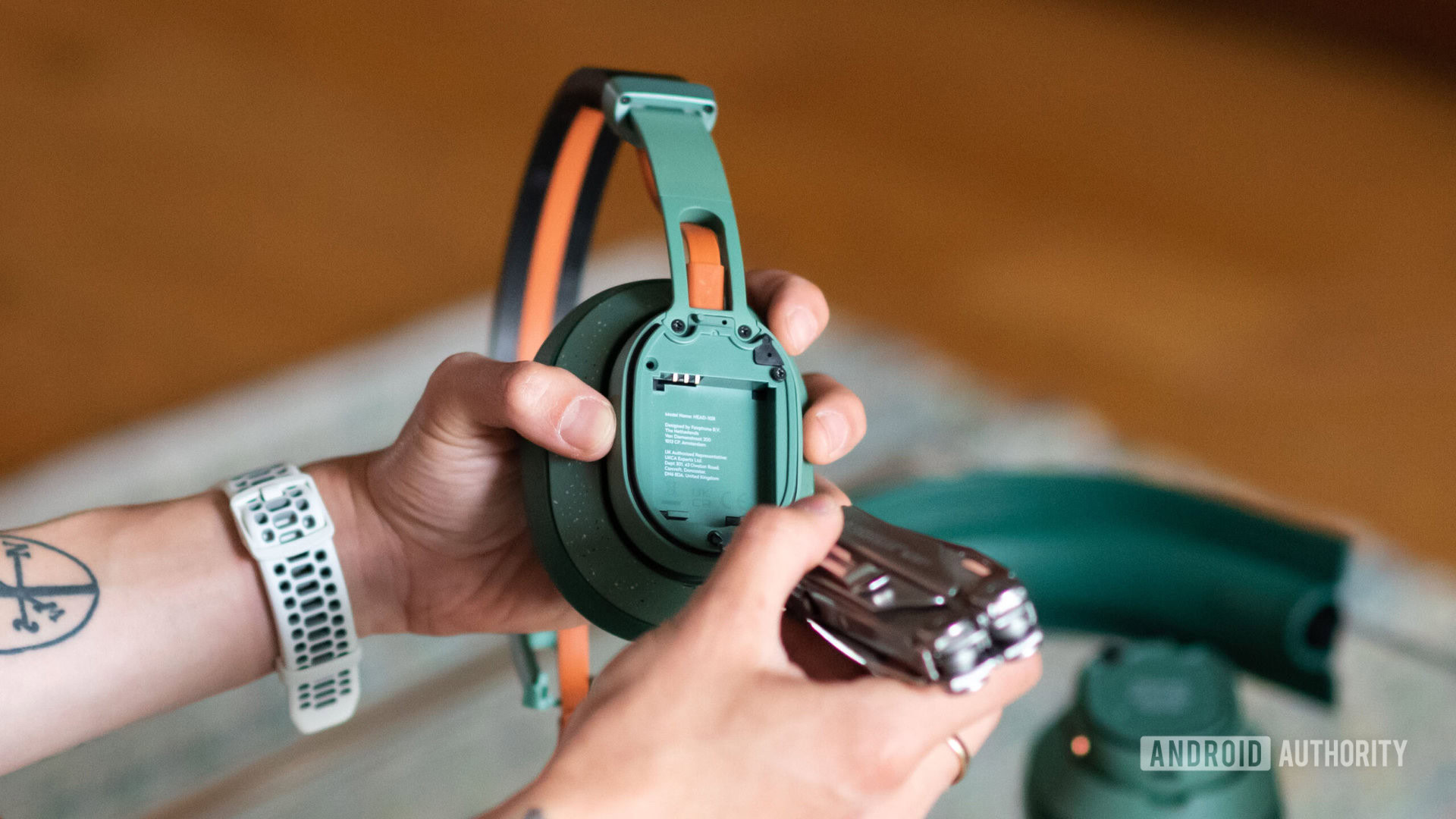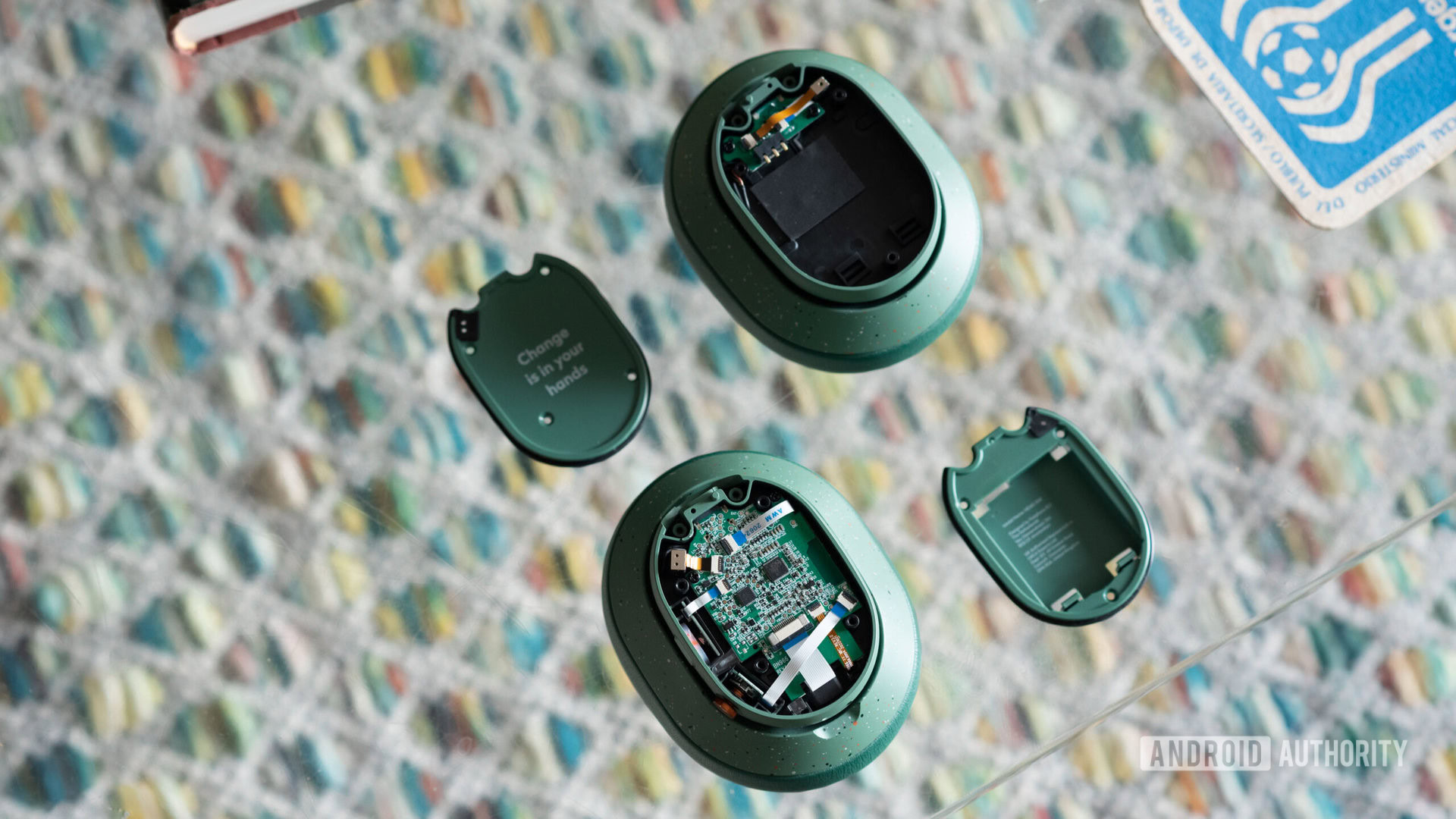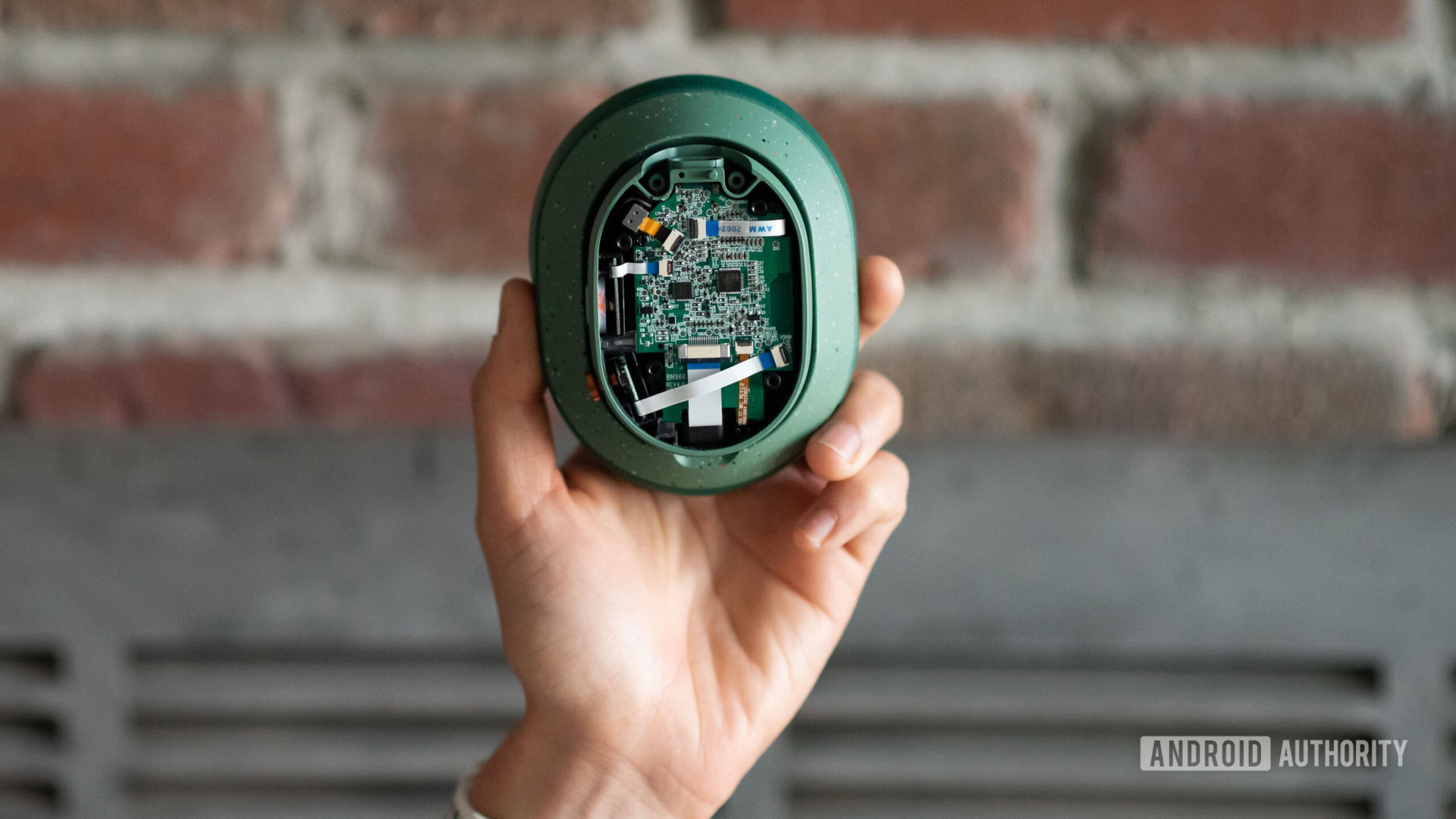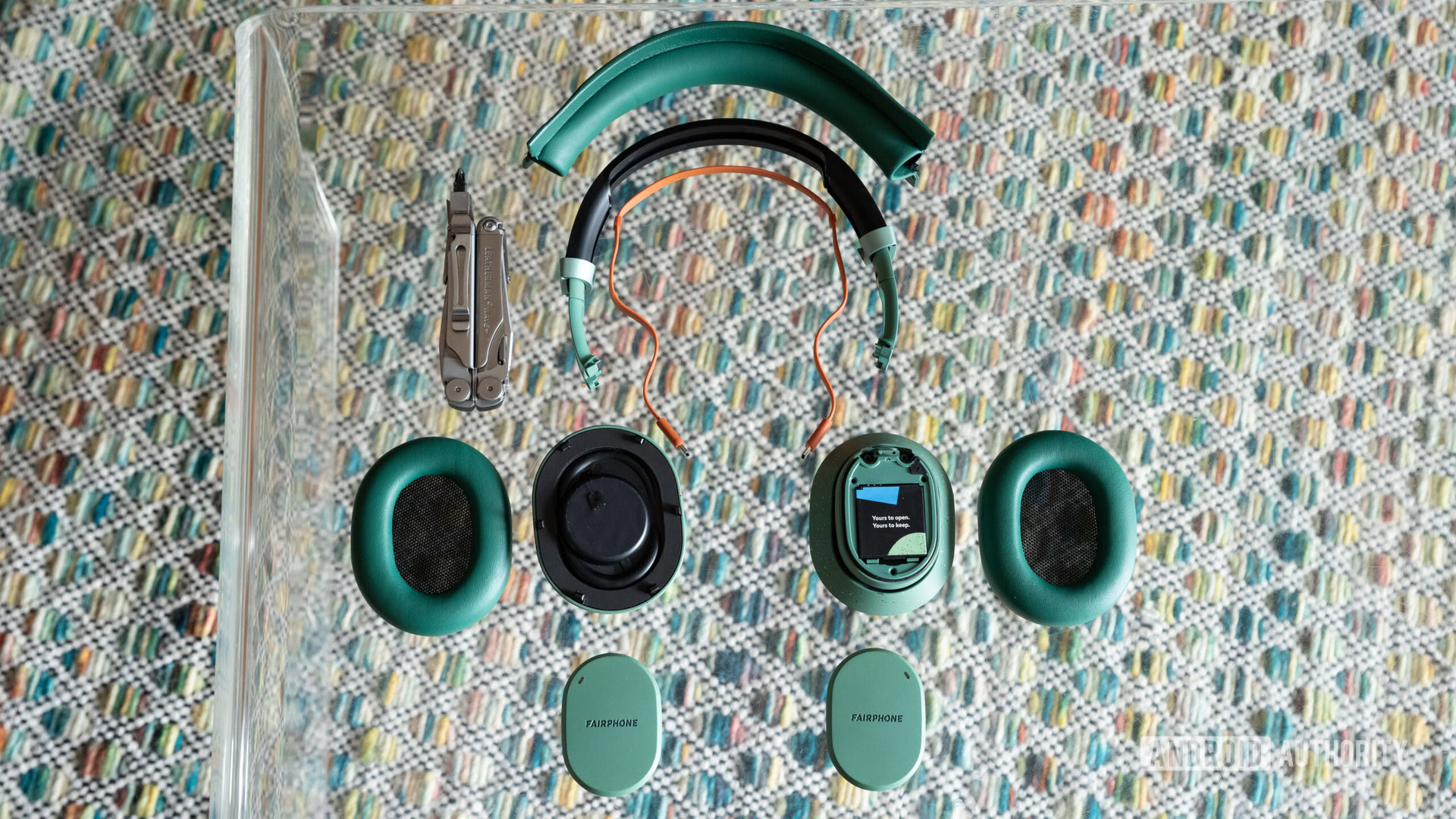Affiliate links on Android Authority may earn us a commission. Learn more.
Repairable headphones are the future, but they're not perfect yet
July 9, 2023

Repairable headphones aren’t new. Audio stalwarts like Sennheiser have offered replaceable parts for ages. DIYers have been tinkering just as long. However, Fairphone is doing something unique with the Fairbuds XL headphones. (Yes, headphones, not earbuds). These wireless cans wed the right-to-repair movement with sustainability. They don’t look too shabby, either.
I’ve used the Fairbuds XL active noise canceling (ANC) headphones for a week. In that time, I’ve grown excited about the future of modular headsets. At present, though, there are some trade-offs to repairable, sustainable headphones.
Do you consider sustainability when buying headphones or earbuds?
Repairable headphones are awesome

Fairphone is doing something extraordinary in today’s market. It’s empowering consumers to fix their electronics and enjoy them for longer. Yes, other companies have modular or repairable wireless headphones (e.g., AIAIAI and Repeat Audio). Yet, only Fairphone has done all this and gone through the rigorous process of creating a sustainable product. The Fairbuds XL use 100% recycled aluminum, tin, polyester, and 80% recycled plastics, and Fairphone even provides a mobile app. Granted, there is a dearth of features.
The Fairbuds are simple to use, disassemble, and reassemble — though the process is time-consuming. Removing the ear cup cover and unscrewing the plate to reveal the circuitry is the closest I’ll ever be to performing brain surgery! Novelty aside, the battery is the most crucial thing that Fairphone lets listeners access. This is the heart that keeps pumping, and like all batteries (and hearts), this one doesn’t last forever. Replacing the battery means you won’t have to buy a new headset when it completely dies, as you do with other flagships. Instead, you can go onto the website and have a replacement shipped to you. It’s that easy and much less wasteful.
Easy access to a replaceable battery is crucial if we want to reduce our e-waste.
Currently, Fairphone offers identical replacement modules, but it could provide ear cup modules with different internals in the future. This might upgrade the headphones’ Bluetooth capabilities and drivers over the years. We asked Fairphone about future upgradability, and it addressed that the modular design could enable that, but it has no plans to release upgraded modules currently. Instead, Fairphone’s laser-focused on longevity. However, it’s a tantalizing prospect to be able to update to a new driver or Bluetooth chip. Dedicated builders could potentially fiddle with the existing circuit board for DIY improvements.

With all this tearing down, you might think that the Fairbuds XL aren’t durable, but quite the contrary. These headphones merit an IP54 dust- and water-resistant rating, which is rare among headphones generally. This should mark the future of headphones, repairable or not.
Although most flagship noise canceling headphones retail for $300-400, the €240 (~$260) retail price of the Fairbuds XL is nothing to sneeze at. Buying these headphones would exceed my monthly grocery budget. That said, over five or more years, you’ll save money by replacing the Fairbuds XL battery (€19.95), ear pads (€14.95), and three headband pieces (€19.95 each).
The possibilities seem endless for the Fairbuds XL and modular headphones at large.
With most headphones, you must replace the headset every few years because of battery degradation. Even if you buy $100-150 headphones, replacing them a couple of times in a decade exceeds the cost of the Fairbuds XL and its spare parts. With the Fairbuds XL, and presumably future sustainable wireless headphones, you have a steep upfront cost but a lower maintenance cost. This saves money in the long run, but it’s an example of the “you need money to save money” phenomenon.
Not all that’s Green(™) is gold

One of the best parts about the Fairbuds XL is still one of the worst parts for the environment. I don’t want to sound harsh, but sourcing precious metals for batteries still damages the environment, even if they are replaceable. Still, that’s better than throwing the whole product away and buying more headphones every few years.
While Fairphone is doing right by its customers and better by the environment, repairable wireless headphones will never truly be eco-friendly, in my book. Instead, they’re less environmentally damaging at best, but wired headphones will always be the real environmental pal.
Sustainable headphones will need to improve their performance to draw general consumers away from disposable cans.
The Fairbuds XL’s performance doesn’t command the €240 asking price either. The Apple AirPods Pro 2 and Sony WH-1000XM4 canceled out significantly more low-frequency noise than the Fairbuds XL when I was on the subway. The ANC on the Fairbuds XL felt more on par with cheaper headphones like the Anker Soundcore Space Q45 ($149 at Amazon). Further, if you’re accustomed to consumer headsets like the AirPods or Samsung Galaxy Buds 2 Pro, you may notice the Fairbuds XL sound very different. Across genres, vocal harmonics sounded quiet, making voices sound unnatural. Cymbal hits came through louder than I expected, relative to vocals and bass. The good news is that firmware updates can improve ANC and sound quality to varying degrees. But buying something with the expectation of an update is not good practice.
To truly stand out from the crowd and attract more than just the avid environmentalist, repairable and sustainable headphone manufacturers must put the basics like comfort and sound quality first. Unfortunately, I just haven’t found the Fairbuds XL comfortable. When I wore glasses, the headphones pained my temples after 30 minutes. When I wore contacts, I could bear an hour and a half before the pain at the crown of my head drilled down. For reference, I can wear my Sony WH-1000XM4 and Shure Aonic 50 headphones for upwards of four hours at a time. Neither headphones bother me with glasses, either. Other nitpicks include laggy controls and the quiet hissing noise that comes through the headset when ANC is on but no music plays.
Are sustainable headphones worth buying?

Buying headphones like the Fairbuds XL is an effective way to vote with your wallet and support the move to sustainable electronics. There are many benefits to repairable headphones at large. They will cost less over the long run, open the door for modular upgrades — not just replacements — and are ultimately better for the environment. All of this is a net positive. I just want to see the performance, app features, and comfort rival other established brands, which will take time.

For the naysayers, yes, it’s true that non-repairable headphones give you a better value for your dollar immediately. It’s true that the default sound quality and lack of an EQ will leave many listeners wanting more. And it’s true that the headphones could be more comfortable. Nevertheless, the first attempt at anything is rarely the best in hindsight. Even with the trade-offs, I laud Fairphone for the Fairbuds XL. We’d all benefit from others following in its footsteps.
The Fairbuds XL and future repairable headphones could be the last headphones you ever buy.
To make the most eco-friendly buying decision today, buy wired headphones or earbuds with replaceable parts. Sennheiser and Beyerdynamic’s headphones are some of the industry’s best, and many are renowned for their reparability. The Beyerdynamic DT 700 Pro X ($269 at Amazon) and DT 900 Pro X ($269 at Amazon) are prime examples of well-built, repairable headphones with stellar sound quality. The Sennheiser HD 650 ($399 at Amazon) are also easy to repair and require very little maintenance. Many of Sennheiser’s earbuds come with replaceable cables too. I use the FiiO FH5 ($39 at Amazon) and intend to keep replacing the cable for decades if I can.
If you currently own headphones or earbuds that work, continuing to use them is your best decision. Remember, the phrase goes, “reduce, reuse, recycle” for a reason.
Thank you for being part of our community. Read our Comment Policy before posting.